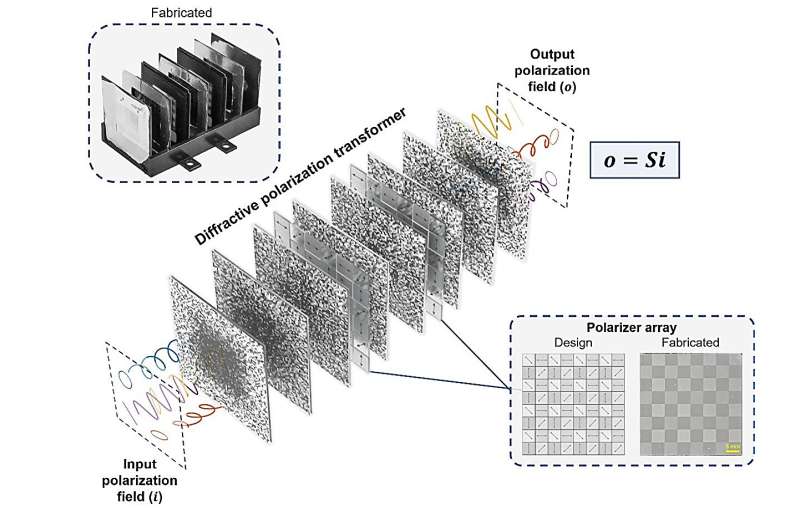This article has been reviewed according to Science X's editorial process and policies. Editors have highlighted the following attributes while ensuring the content's credibility:
fact-checked
peer-reviewed publication
trusted source
proofread
A new route for universal polarization transformations of spatially varying polarization fields

Polarization describes the orientation of oscillations in a light wave, and it plays an essential role in various optical applications—from enhancing visibility in sunglasses and camera lenses to facilitating advanced optical communication and imaging systems. Understanding and mastering the polarization of light is pivotal for advancing many optical technologies. However, manipulating the spatial distribution of the polarization state of an optical field presents significant hurdles, particularly when the synthesis of fields with non-uniform polarization states is desired.
Current polarization modulation devices, such as polarizers, waveplates, spatial light modulators, and various types of metasurfaces, are all confined to a limited range of polarization scattering matrices between their input and output apertures. Furthermore, these polarization transformations implemented by existing devices are not universal and only work when the input polarization states are predefined, rendering them ineffective for unpredictable spatially varying polarization fields at the input of the device.
A research team at UCLA have presented the design of a polarization transformer diffractive network, opening up a new route for universal polarization transformations of spatially varying polarization fields. Their findings, reported in the journal Advanced Materials, demonstrated a diffractive network capable of all-optically synthesizing a large set of complex-valued, arbitrarily-selected polarization scattering matrices between the polarization states at different locations within its input and output fields-of-views.
Trained through supervised deep learning, this diffractive polarization transformer is composed of a series of isotropic diffractive layers, each spatially coded with thousands of diffractive features at the subwavelength level that have optimizable transmission coefficients. Between these diffractive layers, 2D arrays of linear polarizers are also employed to introduce polarization anisotropy within the diffractive processor volume, where the linear polarizers are orientated at different angles and remain fixed.
Based on this unique optical architecture, UCLA researchers showed that a single diffractive polarization transformer could implement 10,000 different spatially-encoded polarization scattering matrices within a compact diffractive processor volume.
Led by Dr. Aydogan Ozcan, the Chancellor's Professor at UCLA's Electrical and Computer Engineering Department and an Associate Director of the California Nano Systems Institute (CNSI), the research team also confirmed the feasibility of this diffractive polarization transformer through experiments.
Using wire-grid polarizers fabricated through photolithography and 3D-printed diffractive layers, the UCLA team built a proof-of-concept design that can all-optically perform a user-defined polarization permutation operation at the terahertz part of the electromagnetic spectrum.
During their experimental validation, the fabricated diffractive polarization transformer showed the capability to simultaneously implement various spatially-encoded polarization scattering matrices, effectively navigating the polarization states at the input to the desired spatially varying polarization states at the output. The measured output fields matched the numerical simulations and design objectives well, underscoring the success of polarization transformations not attainable with prior techniques.
Moving forward, the UCLA team plans to improve their designs for operation under broadband illumination for simultaneous processing of the amplitude, phase, polarization and spectral features encoded in optical fields. Such diffractive polarization transformers can be used to design intelligent machine vision systems enhanced with polarization-aware object detection and classification features, which could find various applications in e.g., remote sensing, security/defense, material inspection and medical imaging.
More information: Yuhang Li et al, Universal Polarization Transformations: Spatial Programming of Polarization Scattering Matrices Using A Deep Learning‐Designed Diffractive Polarization Transformer, Advanced Materials (2023). DOI: 10.1002/adma.202303395. On arXiv: arxiv.org/abs/2304.05724
Journal information: Advanced Materials , arXiv




















